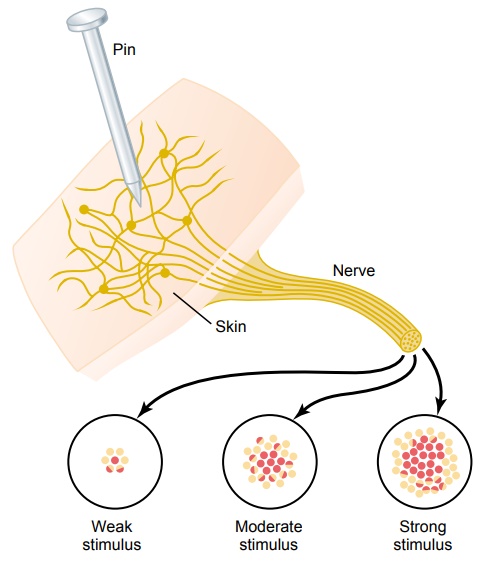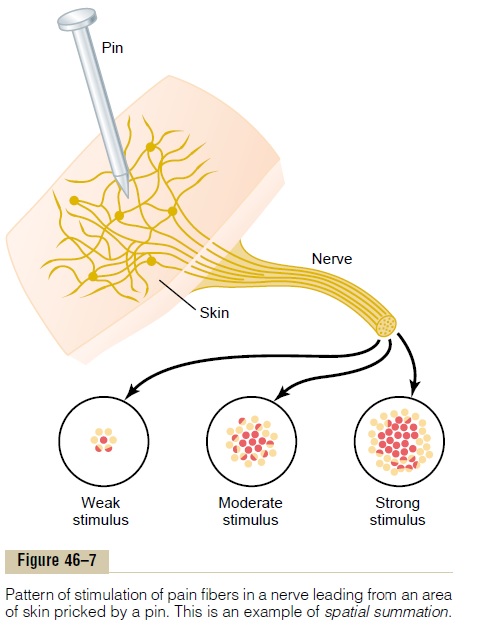Chapter: Medical Physiology: Sensory Receptors, Neuronal Circuits for Processing Information
Transmission of Signals of Different Intensity in Nerve Tracts-Spatial and Temporal Summation

Transmission of Signals of Different Intensity in Nerve Tracts—Spatial and Temporal Summation
One of the characteristics of each signal that always must be conveyed is signal intensity—for instance, the intensity of pain. The different gradations of intensity can be transmitted either by using increasing numbers of parallel fibers or by sending more action potentials along a single fiber. These two mechanisms are called, respectively, spatial summation and temporal summation.
Spatial Summation. Figure 46–7 shows the phenomenonof spatial summation, whereby increasing signal strength is transmitted by using progressively greater numbers of fibers. This figure shows a section of skin innervated by a large number of parallel pain fibers. Each of these arborizes into hundreds of minute freenerve endings that serve as pain receptors. The entirecluster of fibers from one pain fiber frequently covers an area of skin as large as 5 centimeters in diameter. This area is called the receptor field of that fiber. The number of endings is large in the center of the field but diminishes toward the periphery. One can also see from the figure that the arborizing fibrils overlap those from other pain fibers. Therefore, a pinprick of the skin usually stimulates endings from many different pain fibers simultaneously. When the pinprick is in the center of the receptive field of a particular pain fiber, the degree of stimulation of that fiber is far greater than when it is in the periphery of the field, because the number of free nerve endings in the middle of the field is much greater than at the periphery.

Thus, the lower part of Figure 46–7 shows three views of the cross section of the nerve bundle leading from the skin area. To the left is the effect of a weak stimulus, with only a single nerve fiber in the middle of the bundle stimulated strongly (represented by the red-colored fiber), whereas several adjacent fibers are stimulated weakly (half-red fibers). The other two views of the nerve cross section show the effect of a moderate stimulus and a strong stimulus, with pro-gressively more fibers being stimulated. Thus, the stronger signals spread to more and more fibers. This is the phenomenon of spatial summation.

Temporal Summation. A second means for transmittingsignals of increasing strength is by increasing the fre-quency of nerve impulses in each fiber, which is called temporal summation. Figure 46–8 demonstrates this,showing in the upper part a changing strength of signal and in the lower part the actual impulses transmitted by the nerve fiber.
Related Topics